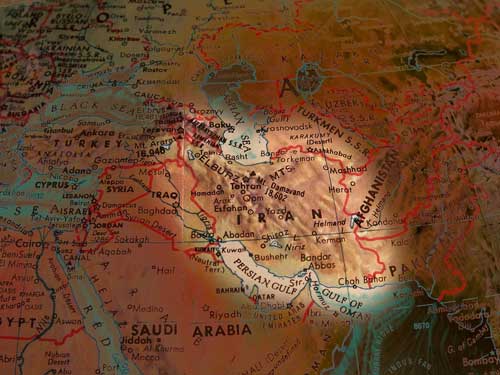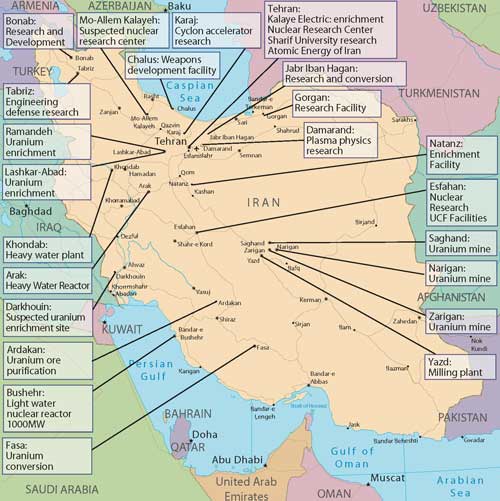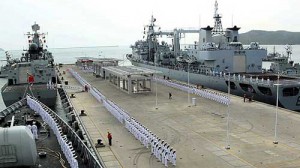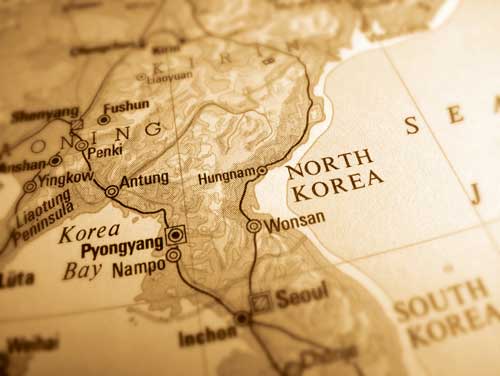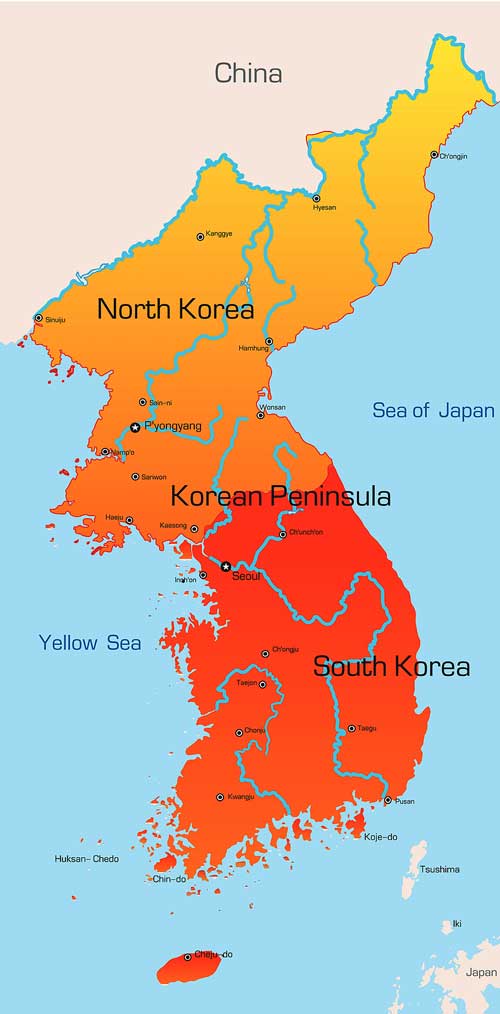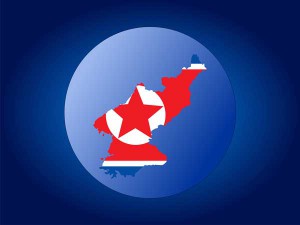An Interview with Vice Admiral Manson Brown
08/09/2011 – Second Line of Defense has highlighted the USCG role and its sister services in shaping Pacific strategy. The companion website the Second Line of Defense Forum focused its initial look at the impact of China on the evolving Pacific challenges, and the USCG is a key part of shaping the US response to such challenges.
And we specifically looked at the USCG role in an article here and additionally in a second article.
On this website we have provided an interview with Admiral Day regarding the unique USCG North Pacific Forum. We also have a special report on the USCG strategy in the Pacific.
And recently we have highlighted various aspects of the Arctic challenges within which the USCG plays a core role, including our article on operating in the Arctic, our piece on the overall Arctic mission, and our article on encouraging U.S. participation in the Arctic.
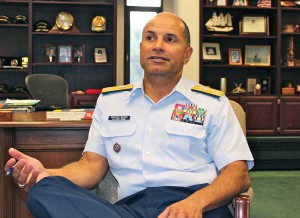
So it was a real pleasure for Second Line of Defense to sit down with the current USCG Pacific Area Commander, Vice Admiral Manson Brown in July to discuss the Admiral’s perspectives on those challenges and the requisite assets he believed was necessary to meet them.
Vice Admiral Manson Brown has a varied and distinguished background. He assumed the duties of Commander, Coast Guard Pacific Area in May 2010, where he serves as the operational commander for all U.S. Coast Guard missions within the half of the world that ranges from the Rocky Mountains to the waters off the East Coast of Africa. He concurrently serves as Commander, Defense Force West and provides Coast Guard mission support to the Department of Defense and Combatant Commanders.
Vice Admiral Brown’s previous commands include the 14th Coast Guard District, Maintenance and Logistics Command Pacific, Sector Honolulu, and Group Charleston. From 1999 to 2002, he served as the Military Assistant to the U.S. Secretary of Transportation, including duty as the Acting Deputy Chief of Staff for six months after the terrorist attacks of September 11, 2001. In May 2003, he served as the Chief of Officer Personnel Management at the Coast Guard Personnel Command. From April to July 2004, he was temporarily assigned as the Senior Advisor for Transportation to the Coalition Provisional Authority in Baghdad, Iraq. Working in a combat zone, he oversaw restoration of Iraq’s major transportation systems, including two major ports.
Previous tours of duty include Assistant Engineering Officer aboard the icebreaker GLACIER, Project Engineer at Civil Engineering Unit Miami, Deputy Group Commander at Group Mayport, FL, Engineering Assignment Officer in the Officer Personnel Division at Coast Guard Headquarters, Facilities Engineer at Support Center Alameda, and Assistant Chief, Civil Engineering Division at Maintenance and Logistics Command Pacific.
We started by discussing with the Admiral the enormity of the Pacific and its importance to the American economy.
Admiral Manson Brown: Most people don’t realize that 85 percent of the US exclusive economic zones (EEZs) are in the Pacific, mostly in the Central and Western Pacific. There are a lot of economies in that region that are driven by the fishing industry.
One of the things that I realized is that even with good enforcement in US EEZ’s, the fish know no boundaries. So they will shift from our EEZ’s to those of other nations and potentially be overfished there.
We formed partnerships with adjoining countries who are working their EEZs to try to manage the illegal fishing beyond our EEZ. We developed a joint strategy, a ship rider program where essentially we use Coast Guard assets and put enforcement officials from six nations that have signed ship rider agreements.
The Central and Western Pacific is significant distance away from the continental US. Most people don’t know that sovereign American territory is located as well in the Central and Western Pacific.
SLD: How long does it take to go from Alameda, California (the USCG HQ in the Pacific) to these territorial waters?
Admiral Manson Brown: To deploy a Cutter from here to American Samoa requires ten or more days.
SLD: So one way to understand the need for the cutters is their endurance. If it takes more than a week to go and a week to come back, endurance buys you more time on station.
Admiral Manson Brown: Correct. And the thing you have to realize in the Pacific, you don’t have the infrastructure that you do in the Atlantic.
So in terms of pier space, fuel, engineering support, food and other logistics, you have to take it with you. When you’re down in a place like American Samoa, you better have most of what you need to operate.
SLD: Endurance from this point is more operational time on station.
Admiral Manson Brown: We also need to be prepared as you alluded to earlier, for the weather conditions in the Pacific, which can be severe, and which can be unpredictable.
And as a former icebreaker sailor, I can tell you that the Pacific storms can whack you pretty heavily. So we need substantial ships to protect our crews, and to promote mission efficiency. And when folks are in Hawaii, they forget that the seas are rough around the islands–this is not the Caribbean.
If you go a mile and a half offshore and to do a SAR case in Hawaii with a 25 foot rigid hull inflatable, you’re doing a SAR case in the middle of the Pacific Ocean.
People think of Hawaii like they think of Florida with the protection of the land mass, but there is no protection out there. So we need more substantial capability to deal with Mother Nature. You will be operating in seas that will scare you.
SLD: What is the impact of these EEZ’s economically?
Admiral Manson Brown: These areas are some of the richest tuna fisheries on the planet. Number one, we’ll see a collapse of our fisheries if we don’t protect these regions, which will affect the fishing economies in that region. Number two, it will affect the fisheries throughout the adjacent regions. There are 22 small nations of Oceania whose economies are driven by fishing licenses, and fish. If those fisheries collapse, we could potentially see Somalia-like instability conditions closer to our sovereign territory.
SLD: The cutters are crucial to such presence and effectiveness. If you physically are not there, and see one of things I think is also important to understand, the ship is the presence. You can have all the ISR you want, but that’s not a good deterrent to anybody. And it doesn’t allow you to prosecute.
Admiral Manson Brown: Yes, indeed. And it’s presence, in a competitive sense, because if we are not there, someone else will be there, whether it’s the illegal fishers or whether it’s Chinese influence in the region. We need to be very concerned about the balance of power in the neighborhood.
If you take a look at some of the other players that are operating in the neighborhood there is clearly an active power game going on.
SLD: Basically, not being there is its own message, so to speak?
Admiral Manson Brown: That’s exactly right. When I was in Tonga, I observed large structures built by the Chinese government and am watching others nations expand their influence around the world.
But there is another important reason that we should be there. It’s another aspect of national security. If you take a look at the march of terrorism through places such as Indonesia, it’s not too difficult to craft an instability scenario where it could leap to Oceania, allowing our enemy to potentially get closer to reach out and touch us.
I remind people that even though American Samoa is a U.S. territory, once you get to American Samoa, you’re in America. It’s not too difficult to reach out and touch us from there.
SLD: Earlier we spoke with Admiral Day about the North Pacific Coast Guard Forum. You are the US representative to that forum, could you discuss this Forum and how it reflects Pacific developments?
Admiral Manson Brown: As I reflect on the history of the North Pacific Coast Guard Forum, one should remember it was a US Coast Guard influenced effort. The forum really allows us to establish the US Coast Guard as the honest broker for protection of fisheries in the high seas drift net area of the Northern Pacific Ocean.
Our collaboration attracts the interest of China, Russia, Japan, Korea, and Canada, our partners in the North Pacific Coast Guard Forum, so that we can hold each other accountable for each of our fishing fleets that are operating in the area, as well as collaborate on enforcement efforts
I think if you extracted the presence of the US, and the US Coast Guard, instability would result. We are the, really the glue that holds that forum together.
I’ve been now to about three different forum meetings in one form or another, and it is not an understatement that we really play a crucial leadership role. This is due to the respect that we garner from those other nations, and because of the capability that we bring to the table.
SLD: Could you discuss the capabilities, which the USCG brings to a region that is crucial to the security-defense engagement of the United States?
Admiral Manson Brown: There are actually three capabilities that we bring to the table that separate us from DOD. Number one is the regulatory capability. The second one is the law enforcement capability, and the third one is the emergency response capability.
And that really gets to our multi-mission nature. Even though we may out there, we are conducting combined operations with Canada, Korea, Japan, China. We’re also there just in case something goes wrong so that we can intercept the problem and be on scene, and provide the search and rescue capability.
With the vast distances, which we refer to as the tyranny of distance out here, if you don’t have enduring presence, which cutters bring, then you’re not going to get to where you may be needed in an emergency in time, particularly in a place like the Bering Sea.
SLD: Forward deployed so to speak?
Admiral Manson Brown: Forward deployed. Operations in the Bering Sea allow us to have a positioned emergency response asset, whether it’s search and rescue or pollution response. There is no significant logistics support up there to enable rapid deployment. Air only gets you so far. You need an emergency surface asset to pull it all together.
SLD: So you need to be pre-positioned to be even able to do a number of these missions?
Admiral Manson Brown: That’s correct. And this is part of our layered strategy. Many people believe that we need to be a coastal coast guard, focused on the ports, waterways, and coastal environment.
But the reality is that because our national interests extend well beyond our shore, whether it’s our vessels, or our mariners, or our possessions and our territories, we need to have presence well beyond our shores to influence good outcomes.
As the Pacific Area Commander, I’m also the USCG Pacific Fleet Commander. That’s a powerful synergy. I’m responsible for the close-in game, and I’m responsible for the away game. Now the away game has some tangible authorities and capabilities, such as fisheries enforcement and search and rescue presence.
But it’s also got some softer type of capability. We do a lot of nation building. We perform a lot of theater security cooperation for PACOM. We’ll send ships over to Japan. We’ve got ships going over to China just to exchange ideas, and discuss common objectives and capabilities, and demonstrate American engagement in the region.
As I travel around, I realize that the USCG is respected internationally because of our law enforcement and regulatory capabilities and our history. When people see our response to Katrina, or to Deep Water Horizon, they want a piece of us.
SLD: And because you’re a security and defense entity that allows you to have a larger dialogue than simply a pure military force?
Admiral Manson Brown: It comes down to common interests. The common interests are those for maritime safety, security, and stewardship.
Other nations understand that we’re also a military service, and we play that security defense interface, but that’s not how the conversation starts. They’re interested in protecting their shores, protecting their shipping, protecting the ports, and waterways, and protecting the environment.
SLD: The role of the USCG as a Title X or defense agency is crucial to the effectiveness of the USCG role here in the Pacific as well?
Admiral Manson Brown: Part of our framework of respect and credibility is the fact that we wear this uniform. People are intrigued in the international community by us. Our unique military and law enforcement character, combined with this uniform, makes it work for us. If I had gone to Beijing in a suit, I would’ve had a very different reaction.
When I was in Iraq in 2004 working for Ambassador Bremer, it was a civilian position. But I took along my Coast Guard uniforms; and it didn’t take too many days for me to figure out that I better wear the uniform because it’s a symbol that commands respect within the international community. That’s something that cannot be lost in the discussion about the future of the USCG and its role in the Pacific.
SLD: Let us turn finally to the question of the Arctic and dealing with the challenges there.
Admiral Manson Brown: I think the Arctic presents a series of predictable surprises to us. One of the things that keeps me up at night is that one of the cruise ships, adventurer cruise ships with say 1000 people onboard, are going to go up and dip their nose into the Bering Sea and have a mishap.
And we will not be present to craft a response,and we do not currently have the infrastructure to help those in distress.
If you take a look at all of the trend lines, the Russians are engaged in the Arctic, and even the Chinese are building an icebreaker. There is more and more human activity in the Arctic because of more and more water being open.
The challenge the Coast Guard has is once the ice becomes water, we have the authority, but we don’t have the capability.
And I will tell you, we don’t have the infrastructure to do the job. It’s not just a Coast Guard’s problem; it’s a national problem.
If you take a look at what Canada is doing to build infrastructure in anticipation of an opening Arctic, we’re at least ten years behind them. If you take a look at Russia and what they’re doing, they at least have a plan.
I think we have a lot of catching up to do.
There’s another component to this that I think we better be attentive to, and that’s the resource component. When it gets to the law of the sea and the plotting of territory up there for resource exploitation, if we’re not careful, we’re going to have our backyard picked, and we won’t be able to do anything about it because we won’t have the investment or the infrastructure to support an Arctic engagement.
SLD: The world is not waiting while the US shapes Arctic capability.
Admiral Manson Brown: That is true. We need a mix of capability. We need to re-enforce our icebreaker fleet now and to then make sure that we have a ship building strategy that allows us to have ships with hardened hulls and other unique capabilities that allow them to operate in areas with ice that could play that role.
What is also crucial is keep the Arctic operational skills alive during any transition. It takes ten years because of the challenges of ice breaking to grow a good icebreaker sailor. If we let our current ice breaking fleet atrophy in this period of uncertainty, then we start at a risk position to try to grow that capability for the future.
I am all for hedging our bets by investing in what we have just to keep our hand in the game.


